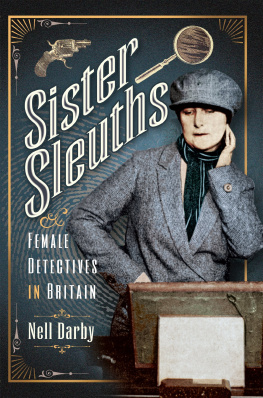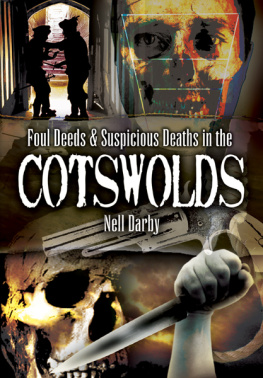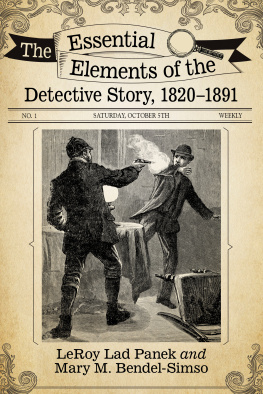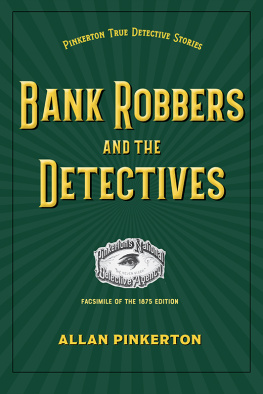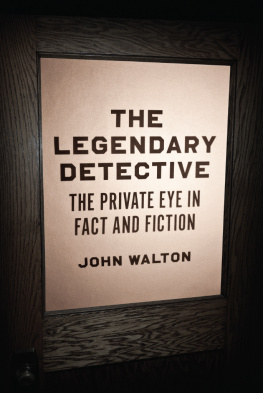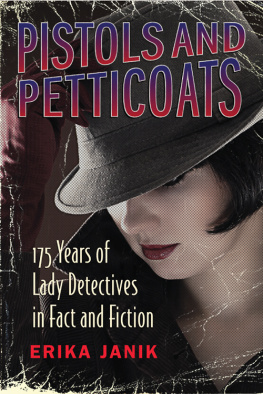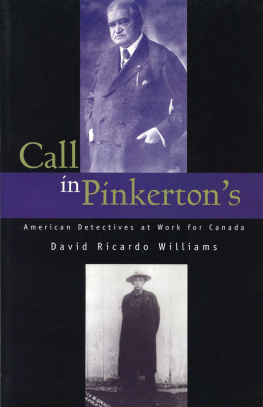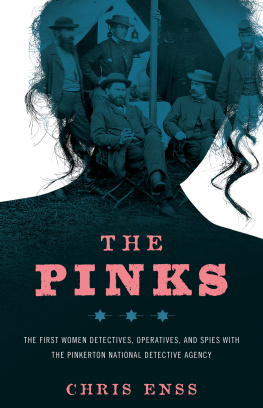Pagebreaks of the print version

Sister Sleuths
Sister Sleuths
Female Detectives in Britain
Nell Darby
First published in Great Britain in 2021 by
Pen & Sword History
An imprint of
Pen & Sword Books Ltd
Yorkshire Philadelphia
Copyright Nell Darby 2021
ISBN 978 1 52678 025 6
ePUB ISBN 978 1 52678 026 3
Mobi ISBN 978 1 52678 027 0
The right of Nell Darby to be identified as Author of this work has been asserted by him in accordance with the Copyright, Designs and Patents Act 1988.
A CIP catalogue record for this book is available from the British Library.
All rights reserved. No part of this book may be reproduced or transmitted in any form or by any means, electronic or mechanical including photocopying, recording or by any information storage and retrieval system, without permission from the Publisher in writing.
Pen & Sword Books Limited incorporates the imprints of Atlas, Archaeology, Aviation, Discovery, Family History, Fiction, History, Maritime, Military, Military Classics, Politics, Select, Transport, True Crime, Air World, Frontline Publishing, Leo Cooper, Remember When, Seaforth Publishing, The Praetorian Press, Wharncliffe Local History, Wharncliffe Transport, Wharncliffe True Crime and White Owl.
For a complete list of Pen & Sword titles please contact
PEN & SWORD BOOKS LIMITED
47 Church Street, Barnsley, South Yorkshire, S70 2AS, England
E-mail:
Website: www.pen-and-sword.co.uk
Or
PEN AND SWORD BOOKS
1950 Lawrence Rd, Havertown, PA 19083, USA
E-mail:
Website: www.penandswordbooks.com
Acknowledgements
I would like to express my appreciation of all the archivists, librarians, archives and libraries for providing me with advice and archival material especially at The Womens Library of the London School of Economics, The National Archives, the Bodleian Library, Oxford Brookes University Library, Mary Evans Picture Library, the Metropolitan Police Heritage Centre, London Metropolitan Archives and, online, the British Newspaper Archive, Findmypast, The Genealogist and Ancestry. Thanks and appreciation are also due to Susannah Stapleton, the author of a recent biography of private detective Maud West, for her help, advice, and good company. Thanks too to Rosemary Collins, Sarah Williams and Andrew Chapman for commissioning me to write about various aspects of the private detectives work for their magazines.
Lastly, thanks as always to my family John, Jake and Eva Darby for their support and for putting up with my numerous tales of lady detectives.
Introduction: At least as good detectives as men
I n a close-knit community, a stranger one day appears, a lone woman, moving her meagre possessions into a vacant apartment. She is unmarried, or perhaps widowed; respectable, articulate, and pleasingly well-mannered. She makes an effort to get to know her new neighbours; she calls on them, she invites the wives over to take a cup of tea with her. There is one local woman, in particular, who she quickly becomes friends with. They regularly take afternoon tea together, and start to gossip together, as ladies do. They show each other photographs of their loved ones; the local lady feels comfortable enough with this new resident, her new confidante, to let her read the love letters she has been sent.
Then, as quickly as she moved in, the new resident moves out again, the friendship suddenly cut off. A few months later, though, the other lady who made her friendship sees her again but this time, it is in the Divorce Court, and the lady is being divorced by her suspicious husband. A witness appears in the courtroom to tell of the ladys indiscretions and her love life, and the married lady flinches in recognition. The witness is her former friend a woman who now tells the court of her real identity, that of the lady detective.
This is what happened in 1907, when the female detective Kate Easton was engaged to watch Violet Mabel Wigglesworth, a company directors wife from Marylebone. Her husband, Francis, had suspected Violet of having an affair with clerk Frederick Simpson, although this was the latest in a litany of complaints that centred around Violets alleged extravagance and intemperance. In 1906, she had admitted to having been indiscreet with another man, and Francis had left her. The following March, he told her he would take her back if she would behave herself . She refused. Franciss response was to engage Kate Easton to live in the same rented lodgings as Violet, at Ennismore Avenue in Chiswick.
The male detective Francis had previously engaged to watch his wife was now let go, and in a fit of jealousy over a woman being given his job, wrote to Violet to tip her off about her new co-tenant:
Kate Easton, a woman detective, has been engaged to watch you. If she or one of her satellites has managed to get into your house, get Mr P or one of your gentlemen friends to chuck her out immediately. So beware of any strange woman who tries to make your acquaintance. They are anxious to find out what takes place at night at your apartments. Beware!
Violet failed to listen to this warning; instead, she was soon discovered in bed with her lover by the female detective. She pleaded with her husband to divorce her quickly; he refused, and it wasnt until April 1909 that a divorce was duly granted.
Violet was discovered by just one of several female detectives operating at this time, but this book looks at the development and growth of the lady detective since the 1850s, using the lives of real women working in this field to bring the hitherto somewhat sidelined history of female detective work to life. The fictional lady detective of the 1860s is recognised here as representing a new career path for women in real life; the fiction was not sensational in depicting women as private detectives, but was reflecting what was happening in real life. The book tracks the development of the amateur detective, and how she differed from her professional counterpart, as well as looking at the pride felt by women who had been involved in amateur work and how this embodied a frustration with their usual day-to-day lives in a patriarchal world. It also explores why and how women became detectives, from Scotland Yards recognition of womens particular skills in detection work and subterfuge, to women seeking to escape the confines of middle-class Victorian life. It also looks at press coverage of these women and how these reflected, at times, a wider concern about womens independence that heralded complaints about the womens suffrage campaign. The egalitarian nature of detective work a job that was open to women from different backgrounds and of different marital status is shown through specific case studies.
Although this is a history of female private detectives in Britain, there are a couple of caveats. Firstly, the book takes, by necessity, a comparative approach at times, in considering similarities and differences on opposite sides of the Atlantic. It looks at the influence of America in determining the possibilities for female detectives in Britain, but also shows how this was a symbiotic relationship. Interestingly Allan Pinkerton a Scot is regarded as the first man to formally employ a female in his Chicago-based detective agency; it was arguably the obituaries of this woman, Kate Warne, copied from the US press by British newspapers, that helped stimulate the profession in Britain. Even in 1901, one newspaper in Yorkshire was stating that the increase in the number of British female detectives meant that if we cannot keep up to American methods of enterprise, we are not altogether lagging hopelessly behind.

